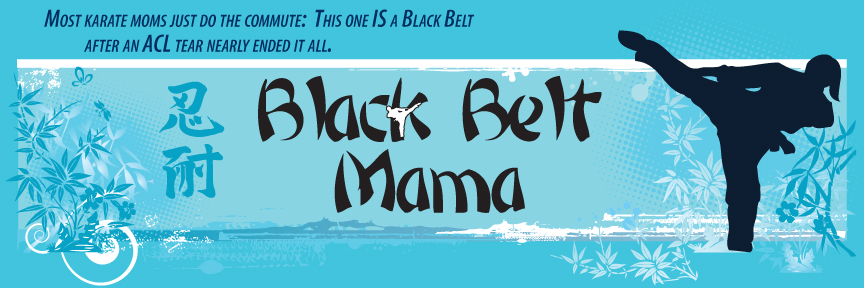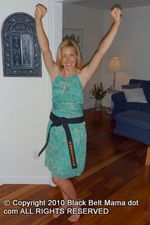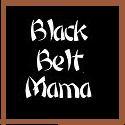March 31, 2008
Where is my Mind? What am I Thinking? I Can’t Do This!
When I was asked to be a feature Martial Artist of the month, I thought, ohh boy…what am I going to write about? My experiences with transmitting information during class have gotten me some blank stares, sleepy eyes, yawns, and inquisitive faces…but most of all, a sense that I pulled the rug out from under their feet.
So I pondered the question and looked for something common that all martial artists go through in the beginning and while advancing through the ranks, even well into the Black belt Dan’s, so maybe I can provide a little enlightenment and not try to bore you with too much Japanese Terminology by doing it.
* * *
The class is milling about, the most Senior Black Belt or Sensei barks out the command " Narande" (line up) after Reishiki (Rei in and respects). The Sensei then tells the students what he is going to instruct in class that night, and the faces of students turn into that deep troubled look, like they left the stopper in the bathtub and forgot to turn off the water!
Whether it is Kata, Waza, Self Defense, or Weapons there is someone that is not going to like what’s in store for them that night. Mostly it is not that they dislike the techniques, it is that they have a difficult time executing what the Sensei wants them to do. So many times I hear, I can’t do this, I don’t how to move, I can’t seem to get any power, this manipulation escapes me, what am I suppose to be feeling, what should I look at, how should I react or act?
Lets look at one activity that makes many students cringe – Sparring. When Sensei barks out "pad up, Kumite," that demon opens the door and some cringe and mutter "oh no, not that," and some even start to make themselves ill, for they will have to deal with that one person or fear or the fact that they’re just not any good at sparring.
* * *
Mushin (no mind), Zanshin (alertive mind, or Warrior Spirit) – these are the building essentials that will help you break through fear and mold you on your path in Martial Arts. Mr. Apsokardu had touched on them and defined them in his article "Where Will We Take the Martial Arts". But what is the foremost needed building essential and answer to that Demon that haunts most students in their progress of learning is: Kanjo! (Emotion).
Kanjo is a leading factor in why students fail to make progress. As soon as the student finds out what he or she is going to do, his mind starts a whirlwind and goes into a spin with all kinds of extraneous thoughts of doubt, anxiety, fear, nervousness, and depression. The battle of Emotion taking place in the Mind has already been lost and there is no room for making the correct, decisive, spontaneous movements.
* * *
If you never had the fortunate pleasure to be an uke or attend a class of Hanshi Bruce Heilman 9th Dan Okinawa Kenpo Karate and Kobudo and Kyoshi William Hayes 7th Dan Shorin Ryu and Shobayashi Ryu karate at one of their seminars, I ask you to do so. There is not a better way to get the feeling of proper execution of emotion and technique than to feel it first hand. First you should know, that you are not going to get hurt. Next execute the attack they tell you to with proper speed and focused technique and leave your senses open to what’s going on. You will notice that both of these men are always smiling and humble in their way, and both have an excellent extensive background in the Martial Arts. Their stories of their experiences and of their teachers are an excellent learning experience in itself.
Now to continue on, the second you start to move, and as the attack is launched you will notice that their head tilts slightly with the chin getting near the chest to protect the neck. The grin is gone now, and their face turns to a stone like feature, the eyes narrow and the pupils dilate big and black that take up all the color in the iris, it’s like looking into the eyes of a Tiger or Shark, black and void of any emotion. One’s feeling seems to be that you just became the prey. As the attack resumes their hands move in a blur and part or parry and slice into the attack with the precision of a surgeon’s scalpel. Their grip becomes vise like and your nerves and muscles seem to tingle and spasm. Their motion and power of the counter technique moves through you like a thunderous freight train passing full speed at railway crossing. As you try to come to wits from the floor, a little disheveled but unhurt (this has all taken place in seconds), you try and compose what just happened! But as you’re helped up by them, you will notice that grin has returned again.
What you just witnessed was Kihaku (Intensity). It is a release of several mental factors such as self confidence and determination; a power focused not from sheer muscle strength, but using the subtleties of technique, in a dominating unrestrained fighting spirit that is an all out commitment, without the slightest hesitation to react naturally and an instinctive fluidity guided by the years of their training.
* * *
Anko Itosu (1830 – 1915) Shorin Ryu Karate was quoted as saying: " During practice, you should imagine yourself on the battlefield. When blocking and striking make the eyes glare, drop the shoulders and harden the body. Now block the enemy’s punch and strike! Always practice with this spirit, so when you are on the real battlefield you will be naturally prepared."
Control of emotion is not easy. It takes one step at a time. In the case of kumite, you will have to resist playing the game of tag and resolve the ego from trying to win or beat your opponent in a competitive sport type environment. Concentration, focus, pinpoint accuracy to the target, that would in reality end the confrontation. This takes time and hard work to control the ego from just winning a game. The other area’s in your style, kata, weapons ,waza, self defense are just as important of a starting area and have to work with and around each other. Lets look at some steps to start to control your emotion.
Kihon – ( Basics) Yes, I know everyone knows basics, but there’s no better place to start! But try now to start again this time with just the simple punch.
It is said, "A Single Strike Decides the Outcome of a Battle."
1st, Kokyu – (Breath) breathe & exhale; relax and settle into your kamae (stance or posture).
Breathing serves to cleanse the body. Exhale out the negative thoughts of fear, worry, doubt ,indecisiveness, hatred; they are self destructive. Inhale positive thoughts of fresh air, confidence, faith, courage, bravery.
2nd Thought – empty the mind of extra thoughts that are not relevant to the task at hand by narrowing the eyes, not in a sleepy manor, but in a gaze that seems to burn out from the eyes toward the target.
3rd Intent – having the mind focus on its purpose, its commitment to complete the technique, no matter what the outcome, or what the other person does.
4th Bear Down Fear – it’s ok to have some fear, but try to harness this emotion to power – not power into the technique, but power projected toward the opponent or target through your motion. There is a saying from one of Japan’s great sword masters Yamoka Tesshu, "Don’t try to save your ass, dash head long into the battle, true spirit will always prevail!"
5th Confidence – be confident of your skills, they do work; all your training has amounted to more than the ordinary person can perceive. Kumite, fighting in class is very difficult. Everyone has roughly the same amount of skill and technique…after a while you start to rely on tricks just to suffice the ego. This is not true Budo, this is not the True Warrior Spirit. There is a saying from an old sword school Shinto Munenryu – "The Sword Follows The Hand, The Hand Follows The Spirit."
The last is Faith – Faith that in time, with diligent practice and your Sensei’s guidance he will set you on the right path and teach you, when you’re ready, the different levels of thought, power, technique, attitude, control, perseverance.
As a final thought, I would like to borrow something from another master of the Martial Arts. Have you ever heard the statement, " Karate, is a Way of Life! " by Gichin Funikoshi? Well what better way to get through life and ensure a good lifestyle other than to control one’s Kanjo (Emotions)!
Sayonara
Z san
***Last chance. Comments on these posts will remain open until the end of the week. Leave a comment here or at The BBM Review for your chance to win a martial arts book or DVD from Turtle Press.
























A fascinating article, Sensei, and one that comes at exactly the right time for me. I am in a perpetual state of kanjo, having broken an ankle last year thanks to an inexpert throw. To be reminded to calm the mind is exactly what I needed. Domo arigato.
I want to win!
Konnichi Wa Chris! I did not say that you should lose, if you reread the article it says;that you should refrain from trying to win against your opponent in a sports type competitive attitude, this frame of mind is not the same as a warriors, selfless, egoless,commitment to deliver technique which does not cloud judgement with Emotion at the right opportunity to attack! Sayonara Z san.
I like what you have said here. I can agree with something you said about the internal groaning when sparring is announced. Part of it *is* the fear of being hurt. It’s something to work past. I will have to re-read the basics many times to remind myself to commit them to memory.
I thank you for this article. It is most informative and interesting and I appreciate it.
Konnichi Wa Marquarite! Fear is sometimes hard to overcome, but can be controlled. First decide if it is fear of being hurt by someone else or is it the fear of you hurting yourself.Or is it just the pain that you can’t seem to tolerate. Accidents do sometimes happen in the Dojo but rarely often.And they are just that an accident.If they happen frequently then it should be brought to the attention of, the Dojos Sensei.If it is the fear of pain, You might want to pair up with a friend in the dojo someone you trust, and with hand pads and body armor just start with light contact to the body or blocking drills to the arms and do not make it competitive to hit each other harder than the other. Work as a team and learn to control what you think, you fear is pain through cultivating a spirit to disperse it throughout the whole body and let it subside quickly, by not letting the mind stay focused at the attacked area. Pain is a mental reaction to Energy. As one trains to learn to release energy in the form of a punch.One can learn to desperse the absorbed energy from a punch and turn the energy around to be released back as a fighting spirit. Similar to a Yin / Yang theory. But this does not mean you should unconsciously bruise yourself in your training. Learn to Tense and release tension of muscles that are affected from the energy at the time of impact,at the contacted area. This tensing and Untensing dispurses the energy as the form we feel as pain.If you have ever seen some demo’s on Sanchin Kata,this has some same theory’s, Mind over matter, Mind and Body as One! As Musashi said. “you must study this.” Sayonara Z san.
While I’ve gotten to a decent level of proficiency at kumite, I do have a severe problem with achieving mushin. I’m an analyst at heart and I tend to overthink and slow myself down with the multitude of possibilities.
Fear of getting hurt no longer slows me down (nothing like having it happen and discovering it was a phantom, not the real thing I was afraid of). However fear of hurting my opponent can kick in on occassion, particularly when they’re smaller and/or younger than I am.
Good and interesting article, Sensei.
Konnichi Wa, Prepetual Beginner, congrats on conquering your phantom. Mushin (No Mind) works on spontaneity,Kumite has this spontaneity, but the form is only on the defensive side.it is the unthinking desisive quick action the mind decides from your trained capabilitys.with Mushin you don’t make the desisive,decision, its a natural reaction to the attack.Flowing and bending and reslient,like the Yanagi Tree,(Willow Tree).When one thinks and plans the attack this is the offense not Mushin. But on the same venue of Yin,Yang,Chinese or In,Yo,Japanese,If one creates an openning,(Suki)a gap in ones offensive posture, then and only then,at the slightest last fraction of a second you let Mushin,free will the Mind to react.Not correagraph the scenario or outcome beforehand. this is the cluttering of the mind ! as Takuan,
the Buddist Priest tells famed Swordsmen Munenori Yagyu.
As for your fear to hurt smaller opponents.Sometimes it is the smaller opponent that will hurt himself aganist you by not executing proper technique.He may feel inferrior for lack of or size and try to restore ego with unconsiously making uncontrolled agressive attacks. Which they impale themselves into your technique.
Start out by gaging the abilitys of your oponnents by playing more the passive agressor,or uke,build his confidence let him learn as well as you will learn, if you slow down, to read opponents intentions, strengths, weaknesses, balance, help him correct his movements so his attacks are carried out smoothly. You will probably end up with a better Kumite practice for both individuals,sharing knowlege and learning and understanding better technical skills.
As before, Musashi states,”You must study this”!
Sayonara Z san.